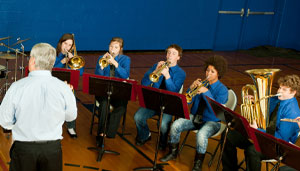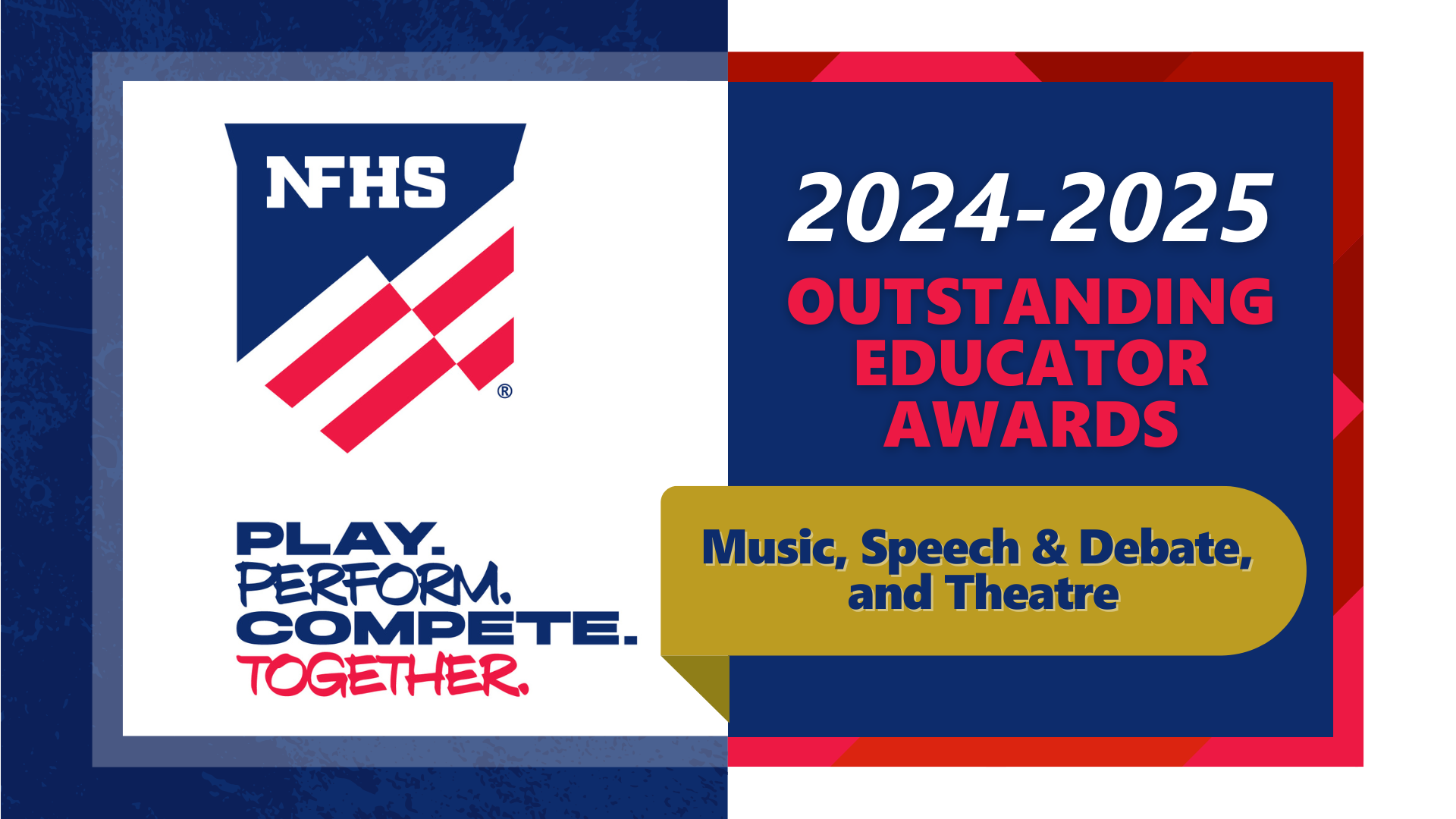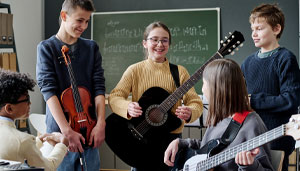Notation Software In The Music Classroom
By Marjorie LoPresti on February 23, 2022 music directors & adjudicators article PrintMusic notation programs are a basic part of any musician’s tool kit. Nearly every music teacher uses at least one notation program to create custom etudes, arrangements, and worksheets for students. With a little imagination, notation programs can also be valuable for student hands-on learning, creativity, and music practice activities.
Notation Software Overview and Options
Most notation programs, from the most basic to the fullest-featured, bear many similarities. They include a playback feature, as well as manual note input and step-time note entry. Many programs feature note entry via MIDI keyboard or musical typing. Editing tools for key signature, time signature, articulation, dynamics, and various types of staff text are grouped together in a logical manner—sometimes with dropdown menus, and sometimes with tool palettes.
Finale and Sibelius are the most widely adopted full-featured notation programs. Their high-end functionality is a must-have for serious composers and arrangers, but the price puts them out of reach for many students and school programs. Notion and Dorico are also worthy options among full-fledged notation programs with valuable features, but they are not as widely used. Notion and other software developers also offer iPad/tablet apps.
Many school programs and students use low-cost and free options. MuseScore is a totally free, downloadable program. Its functionality is much like Finale or Sibelius, but without all of the fancy layout and engraving tools. Both Finale and Sibelius offer scaled-back student versions. Finale Notepad is free, and Sibelius Student is heavily discounted. While the price might be right, all three of these notation programs are installed on specific devices, which can create accessibility and file management challenges. Students may need to save to a central server, Dropbox, Google Drive, or email individual files to share work with teachers and classmates.
Cloud-based music notation options include Noteflight and Flat. Cloud-based notation software has distinct advantages for educational use. Students can work anywhere, anytime they have access to the Internet, not just on a specific computer or tablet with the software/app installed on it. All files are stored online, so they are accessible to students and teachers. Built-in collaboration features allow musicians to connect across town or across the globe. Both Noteflight and Flat offer limited free versions, and premium versions for educational settings and power users. The premium education editions offer lesson plans and music libraries. Noteflight has one key advantage: users can record audio along with the built-in MIDI-driven notation playback.
The Noteflight Learn educational version is available as a standalone school product, or as part of the MusicFirst online classroom. Noteflight Learn’s sheet music and lesson library offers public domain works, lesson plans and templates. For an additional fee, schools can add Popular Music, Band, Choir, Orchestra, Piano, and Guitar libraries which include more contemporary and copyrighted works.
Music Notation Software As A Teaching Tool
Since the first days of computerized music notation, teachers have been using music notation software to create and print worksheets and written assessments for students. Now, students can take advantage of the interactive element of score playback to check their own work in progress. Teachers can share a score with students by posting to a school website or LMS, allowing students to make their own copies. Teachers can also use an activity template function like the one available in Noteflight to make scores accessible to students. Learning activities for worksheet-style use of any type of notation software include:
- Note naming/identification (grades 2 and up)
- Chord construction (grades 5 and up)
- Error identification and correction, when combined with a separate audio model/recording (grades 6 and up)
- Completing rhythm notation activities and entering rhythm counting (grades 2 and up)
- Adding fingering for each student’s instrument (grades 3 and up)
Music Notation Software As A Creative Tool
Music notation software is a powerful creative tool. The immediacy of hearing the playback of notes entered on the screen allows real-time editing and revision of compositions. Inside Music, a music composition learning program developed by MusicComp (formerly the Vermont MIDI Project), offers a well-structured, scaffolded system for beginners to learn to compose. Inside Music uses Noteflight templates, and is also available within the MusicFirst Classroom as a premade, ready-to-use sequence of 21 lessons.
Any music composition activity that teachers can envision for students using standard music notation can be adapted to use music notation software templates. Such templates are scores that are properly formatted for the student’s starting point, with additional instructions, and sometimes a bank of notes and rhythms. Some composition and creative activities for students include:
- Complete the given rhythm (grades 2 and up)
- Complete the given melody (grades 2 and up)
- Use the rhythms in the “rhythm bank” to compose a piece for 3 rhythm percussion instruments (grades 2 and up)
- Compose a 4, 8 or 12 measure melody using a given scale/set of pitches (grades 2 and up)
- Create variations on the given melody (grades 3 and up)
- Harmonize the given melody with a countermelody (grade 5 and up)
- Add tempo markings, dynamics, and articulation markings to make the given melody more exciting (grade 3 and up)
Music Notation Software As A Practice Tool
Any teacher who uses music notation software to create scales, etudes, and other technical exercises is already using the software as a stepping stone for music practice. The playback feature of all notation programs allows the user to change the tempo. When teachers provide the score to students, they are providing a differentiated practice aide, students can set the tempo, and change it as they become more accomplished in their performing skills. Noteflight’s ability to record along with the score gives both students and teachers the ability to verify music practice, assess progress, and identify areas needing more time and attention. This feature helps put error diagnosis and correction directly into the student’s hands.
Notation software can also empower students to create their own etudes and sight-reading exercises. Teachers can provide templates, such as in creative activities, and allow students to customize rhythms and pitch patterns for scales, arpeggios and etudes. Ownership of a musical score certainly can increase student engagement and engender a desire to accurately perform technical exercises they created themselves. Likewise, student created sight-reading exercises provide a fun and challenging way for students to compose short excerpts that fit specific parameters (length, key, rhythmic difficulty, and intervallic leaps). Such student-created exercises can provide a level of challenge and healthy competition when classmates perform their peers’ creations.
Regardless of your choice of notation software, consider putting the power of creation and practice in your students’ hands. Beyond printed worksheets, the audio playback of every notation program provides instant feedback and increases student engagement in ways never before possible.
Marjorie LoPresti
This article first appeared in the TEMPO, May 2019 edition. The New Jersey Music Educators association provides programs and activities for professional educators, students and future music educators striving to enhance the quality of music education for all children. Check out the New Jersey Music Educators Association here: ( https://njmea.org/ )
Most Recent Articles
- nfhs news NFHS Announces Partnership with DICK’S Sporting Goods as Official and Exclusive Sporting Goods Retail Partner
- Winter Playoffs on NFHS Network
- nfhs news NFHS Flag Football Rules Committee Meets to Develop First Rules for High School Competition
- It All Started Here: Ryan Crouser
- Unusual Nicknames: Watervliet Cannoneers







